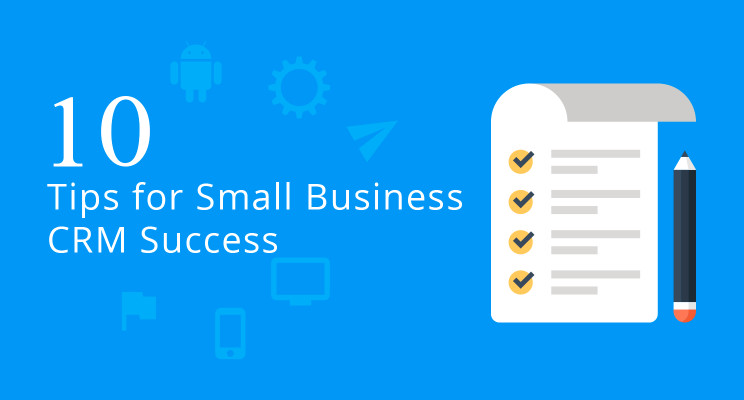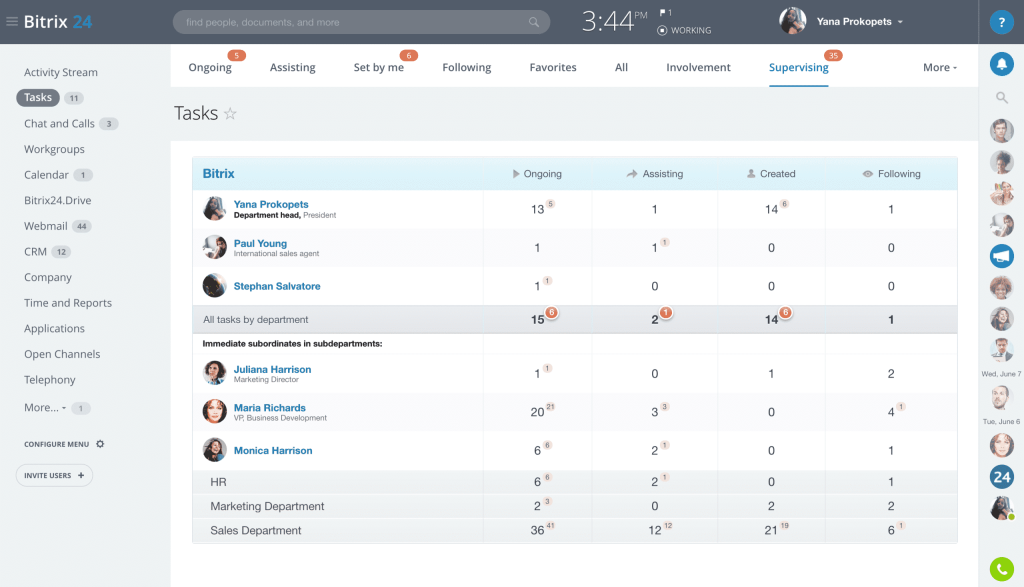
Boost Your Small Business: Essential CRM Tips for Success
Running a small business is a whirlwind of activity, isn’t it? You’re juggling everything from product development to marketing, customer service, and, of course, keeping the books balanced. In this dynamic environment, efficiency and organization are your best friends. And that’s where a Customer Relationship Management (CRM) system comes in. But navigating the world of CRM can feel overwhelming. Fear not! This guide is packed with essential CRM tips specifically tailored for small businesses, designed to help you streamline your operations, boost customer satisfaction, and ultimately, drive growth. We’ll delve into everything from choosing the right CRM to maximizing its potential for your unique needs.
What is a CRM and Why Does Your Small Business Need One?
Before we dive into the tips, let’s clarify what a CRM actually *is*. At its core, a CRM is a system that helps you manage your interactions with current and potential customers. It’s a centralized hub for all your customer-related data, including contact information, communication history, sales opportunities, and more. Think of it as your business’s memory, always remembering the details so you don’t have to.
Why is this crucial for a small business? Well, consider the alternative: scattered information across spreadsheets, email inboxes, and sticky notes. This fragmented approach leads to missed opportunities, duplicated efforts, and frustrated customers. A CRM solves these problems by:
- Centralizing Customer Data: No more searching through multiple platforms. Everything is in one place.
- Improving Customer Service: Accessing customer history instantly empowers your team to provide personalized and responsive support.
- Boosting Sales: Tracking leads, managing sales pipelines, and automating follow-ups can significantly increase your sales conversion rates.
- Enhancing Marketing Efforts: Segmenting your audience and tailoring your marketing campaigns based on customer behavior becomes much easier.
- Increasing Efficiency: Automating repetitive tasks frees up your team to focus on higher-value activities.
In essence, a CRM is an investment in your business’s future. It’s a tool that helps you build stronger customer relationships, drive sales, and scale your operations efficiently.
Choosing the Right CRM for Your Small Business: A Step-by-Step Guide
Choosing the right CRM is a crucial first step. There’s a vast array of options available, each with its own strengths and weaknesses. Here’s a step-by-step guide to help you make the best decision:
1. Assess Your Needs and Goals
Before you start comparing CRM systems, take some time to define your specific needs and goals. What problems are you trying to solve? What do you want to achieve with a CRM? Consider these questions:
- What are your biggest pain points related to customer management? (e.g., difficulty tracking leads, poor customer service, inefficient sales processes).
- What features are essential for your business? (e.g., contact management, sales pipeline management, email marketing integration, reporting).
- What are your growth projections? Choose a CRM that can scale with your business.
- What is your budget? CRM pricing varies widely, so determine how much you can realistically spend.
By understanding your needs, you can narrow down your options and focus on CRM systems that are the best fit.
2. Research CRM Options
Once you have a clear understanding of your requirements, it’s time to research different CRM systems. Here are some popular options to consider, each with its own set of features and pricing:
- Zoho CRM: A feature-rich and affordable option, ideal for small to medium-sized businesses. Offers a wide range of integrations and customization options.
- HubSpot CRM: A free CRM with excellent marketing automation capabilities. Great for businesses that prioritize inbound marketing. Paid plans offer more advanced features.
- Salesforce Essentials: A simplified version of Salesforce, designed for small businesses. Offers robust features and scalability, but can be more expensive.
- Pipedrive: A sales-focused CRM designed for simplicity and ease of use. Ideal for businesses that need a streamlined sales pipeline.
- Freshsales: A CRM focused on sales and customer engagement, with a user-friendly interface and strong automation features.
When researching, pay attention to the following:
- Features: Does the CRM offer the features you need?
- Ease of Use: Is the interface intuitive and easy to navigate?
- Integrations: Does the CRM integrate with your existing tools (e.g., email marketing platforms, accounting software)?
- Pricing: Is the pricing model affordable and transparent?
- Customer Support: What level of support is provided?
- Reviews and Ratings: Read online reviews to get insights into other users’ experiences.
3. Consider Pricing and Scalability
CRM pricing models vary. Some offer free versions with limited features, while others have tiered pricing based on the number of users or features. Consider the following:
- Free Plans: Great for getting started, but often have limitations on storage, users, or features.
- Subscription-Based Plans: Usually offer different tiers with increasing functionality and pricing.
- Per-User Pricing: You pay a fee for each user who accesses the CRM. This is common for many platforms.
- Consider Your Future Needs: Choose a CRM that can grow with your business. Make sure the platform offers features that you might need later on.
Don’t just focus on the initial cost. Consider the long-term value and how the CRM can help you increase revenue and reduce costs.
4. Evaluate Ease of Use and Implementation
A CRM is only effective if your team actually uses it. Choose a system with a user-friendly interface and a straightforward implementation process. Consider:
- User Interface: Is the interface clean, intuitive, and easy to navigate?
- Training: Does the vendor provide training resources or support?
- Data Migration: How easy is it to import your existing data into the CRM?
- Implementation Time: How long will it take to set up the CRM and train your team?
Look for a CRM that offers excellent customer support and resources to help you get started.
5. Test Drive Before You Commit
Many CRM providers offer free trials or demos. Take advantage of these opportunities to test the system and see if it’s the right fit for your business. This is your chance to:
- Explore the features: Experiment with different features to see how they work.
- Test the user interface: Make sure the interface is intuitive and easy to navigate.
- Assess the integration capabilities: See how the CRM integrates with your existing tools.
- Get feedback from your team: Involve your team in the testing process and gather their feedback.
By taking the time to test drive different CRM options, you can make a more informed decision and choose a system that truly meets your needs.
Essential CRM Tips for Small Business Success
Once you’ve chosen your CRM, the real work begins. Here are some essential tips to help you maximize its potential and achieve success:
1. Implement a Robust Data Entry System
The success of your CRM hinges on the quality of your data. A well-structured data entry system is crucial for ensuring accuracy, consistency, and usability. Here’s what you should do:
- Define Data Fields: Determine which data fields are essential for your business (e.g., contact name, email address, phone number, company name, industry, lead source, etc.).
- Establish Data Entry Protocols: Create clear guidelines for how data should be entered (e.g., consistent formatting, standardized abbreviations, mandatory fields).
- Train Your Team: Provide thorough training on data entry procedures to ensure everyone understands the importance of accuracy and consistency.
- Automate Data Entry Where Possible: Use integrations and automation features to automatically populate data from other sources (e.g., website forms, email marketing platforms).
- Regularly Clean and Update Your Data: Schedule regular data cleansing and updating to remove duplicates, correct errors, and ensure that your information is current.
A clean and well-maintained database is the foundation of a successful CRM implementation. It will improve your team’s productivity and give you the most valuable insights.
2. Customize Your CRM to Fit Your Business Processes
Don’t treat your CRM as a one-size-fits-all solution. Take the time to customize it to align with your unique business processes and workflows. This will make the CRM more useful and efficient for your team. Consider these customization options:
- Customize Fields and Layouts: Add custom fields to capture specific information relevant to your business. Modify layouts to display the most important information at a glance.
- Create Custom Workflows and Automations: Automate repetitive tasks, such as sending follow-up emails, assigning leads, or updating deal stages.
- Integrate with Other Tools: Connect your CRM with other tools you use, such as email marketing platforms, accounting software, and social media channels.
- Build Custom Reports and Dashboards: Create reports and dashboards that provide insights into your key performance indicators (KPIs) and sales metrics.
- Tailor the User Experience: Customize the interface to match your branding and make it more user-friendly for your team.
The more you tailor your CRM to your specific needs, the more value you’ll get out of it.
3. Focus on Lead Management and Sales Pipeline Optimization
Your CRM is a powerful tool for managing leads and optimizing your sales pipeline. Here’s how to leverage it:
- Capture Leads Effectively: Use website forms, landing pages, and other lead capture methods to collect lead information directly into your CRM.
- Score and Qualify Leads: Use lead scoring to prioritize the leads that are most likely to convert. Qualify leads based on their needs, budget, and authority.
- Manage Your Sales Pipeline: Create a clear sales pipeline with defined stages (e.g., Prospecting, Qualification, Proposal, Negotiation, Closed Won/Lost).
- Track Sales Activities: Log all sales activities, such as calls, emails, meetings, and presentations.
- Automate Follow-ups: Set up automated email sequences and tasks to follow up with leads and move them through the sales pipeline.
- Analyze Sales Performance: Use reports and dashboards to track your sales performance, identify bottlenecks, and optimize your sales process.
By effectively managing leads and optimizing your sales pipeline, you can increase your conversion rates and drive more revenue.
4. Leverage Automation to Save Time and Improve Efficiency
Automation is one of the biggest advantages of using a CRM. By automating repetitive tasks, you can free up your team to focus on more strategic activities. Consider these automation opportunities:
- Automated Email Marketing: Set up automated email sequences to nurture leads, onboard new customers, and send targeted promotions.
- Task Automation: Automate tasks such as creating new contacts, assigning leads, and scheduling follow-up activities.
- Workflow Automation: Create workflows to automate complex processes, such as lead qualification or deal management.
- Automated Reporting: Automate the generation of reports and dashboards to track your key performance indicators (KPIs).
- Automated Reminders: Set up automated reminders for important tasks and deadlines.
Start small and gradually implement more automation as you become more comfortable. Automation will make your team more efficient and allow them to focus on the most important tasks.
5. Prioritize Customer Service and Support
A CRM is invaluable for providing excellent customer service and support. Use your CRM to:
- Track Customer Interactions: Log all customer interactions, including calls, emails, and support tickets.
- Provide Personalized Support: Access customer history instantly to provide personalized and responsive support.
- Manage Support Tickets: Use the CRM to manage and track support tickets, ensuring that all issues are resolved efficiently.
- Create a Knowledge Base: Build a knowledge base of frequently asked questions and answers to empower customers to find solutions on their own.
- Gather Customer Feedback: Use the CRM to collect customer feedback and identify areas for improvement.
Exceptional customer service is essential for building customer loyalty and driving repeat business. A CRM can help you deliver a superior customer experience.
6. Train Your Team and Foster Adoption
Your CRM is only as effective as the people who use it. It’s essential to provide thorough training to your team and foster adoption of the system. Here’s how:
- Provide Comprehensive Training: Offer training sessions on all aspects of the CRM, including data entry, features, and workflows.
- Create User Guides and Documentation: Develop user guides and documentation to help your team learn and use the CRM effectively.
- Encourage Adoption: Highlight the benefits of using the CRM and demonstrate how it can make their jobs easier.
- Provide Ongoing Support: Offer ongoing support and answer questions as they arise.
- Monitor Usage and Provide Feedback: Track CRM usage and provide feedback to your team to encourage consistent use.
A well-trained and engaged team is essential for maximizing the value of your CRM.
7. Integrate Your CRM with Other Tools
To get the most out of your CRM, integrate it with your other business tools. This will streamline your workflows and improve data accuracy. Consider integrating with the following:
- Email Marketing Platforms: Integrate your CRM with your email marketing platform to automate email campaigns and personalize your messaging.
- Accounting Software: Integrate your CRM with your accounting software to track sales and manage invoices.
- Social Media Channels: Integrate your CRM with your social media channels to track social media interactions and engage with your customers.
- Project Management Software: Integrate your CRM with your project management software to manage projects and track progress.
- Communication Tools: Integrate your CRM with your phone system to log calls and track call history.
By integrating your CRM with other tools, you can create a more connected and efficient business ecosystem.
8. Regularly Review and Optimize Your CRM
Your CRM implementation is not a one-time project. It’s an ongoing process that requires regular review and optimization. Here’s how to do it:
- Monitor Your Key Performance Indicators (KPIs): Track your KPIs to measure the effectiveness of your CRM.
- Analyze Your Data: Regularly analyze your data to identify trends, patterns, and areas for improvement.
- Gather Feedback: Gather feedback from your team to identify areas where the CRM can be improved.
- Make Adjustments: Make adjustments to your CRM based on your analysis and feedback.
- Stay Updated: Stay up-to-date on the latest CRM features and best practices.
By regularly reviewing and optimizing your CRM, you can ensure that it continues to meet your evolving business needs.
Conclusion: CRM – Your Small Business’s Secret Weapon
In today’s competitive landscape, a CRM is no longer a luxury; it’s a necessity. By implementing the tips outlined in this guide, you can transform your CRM from a simple contact database into a powerful tool that drives sales, improves customer service, and fuels growth. Remember to choose the right CRM for your needs, customize it to your business processes, and prioritize data quality and user adoption. With a well-implemented CRM, your small business will be well-equipped to build stronger customer relationships, increase efficiency, and achieve sustainable success. So, embrace the power of CRM and watch your business thrive!


